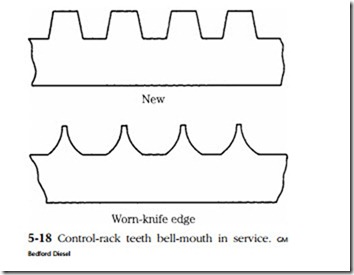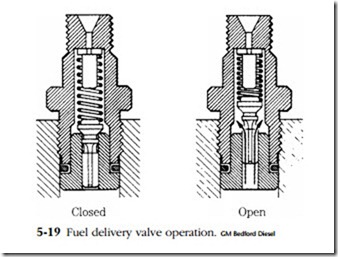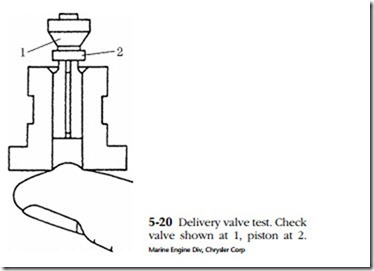Delivery valves
Injectors feed through delivery valves mounted on the distributor head or above each barrel on inline pumps. These check valves open under pressure to supply fuel to the injectors and close automatically during the suction stroke. Most delivery valves consist of a conical sealing element shaped like an inverted top hat (Fig. 5-19). The extension below the element, known as the piston, has two functions. It centers the valve over its seat and acts as a ram to force fuel back into the pump as the valve
closes. This action assures a rapid drop in pressure so that the injector snaps shut without after-dribble.
Delivery valves come in various shapes and sizes. Some replace the conical element with a disc, others hold a certain percentage of pressure in the downstream plumbing after closing. But all work on the same general principle.
Service
Delivery-valve problems are cylinder specific. If the valve sticks open, no fuel passes to the associated injector. Leakage is harder to diagnose. White smoke that persists after all bases have been touched—pump pressure and timing, new injectors, and engine compression—suggests that one or more delivery valves may be at fault. Disassemble one valve at a time, clean the parts thoroughly, and test for leaks by blowing through the outlet port. Older, simpler valves can sometimes be resurfaced.
Check piston fit by depressing the valve and placing your finger over the inlet port (Fig. 5-20). You should feel the vacuum as the piston falls.


